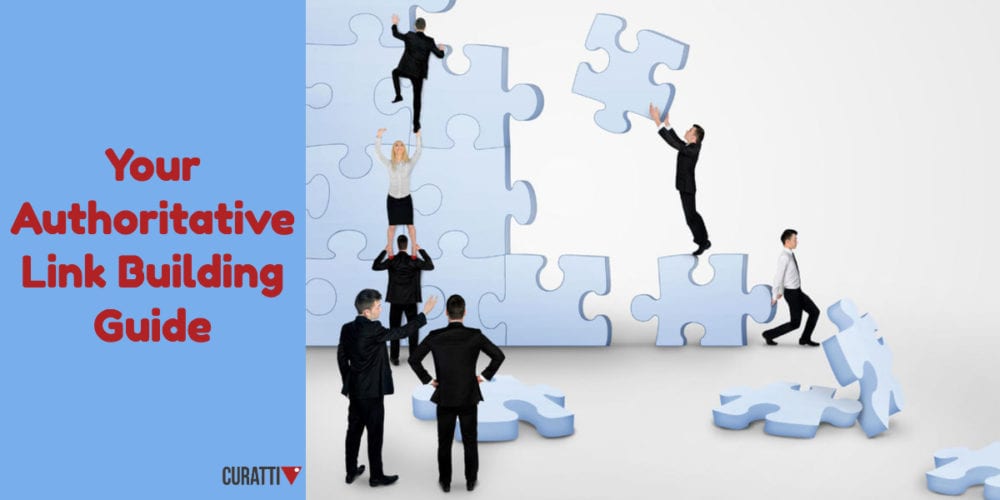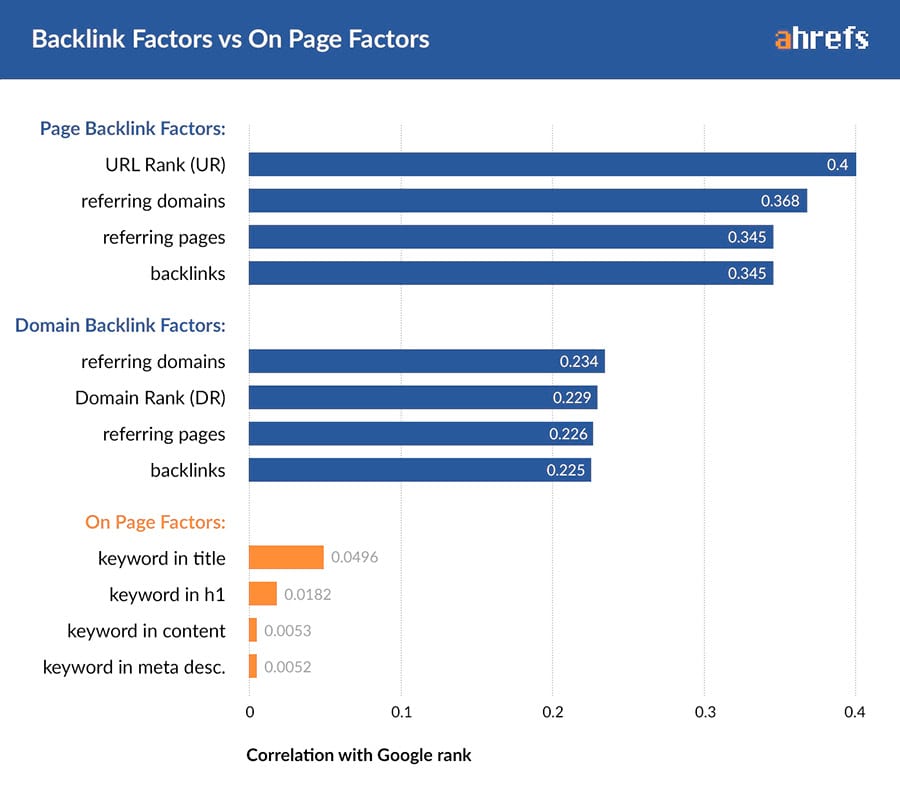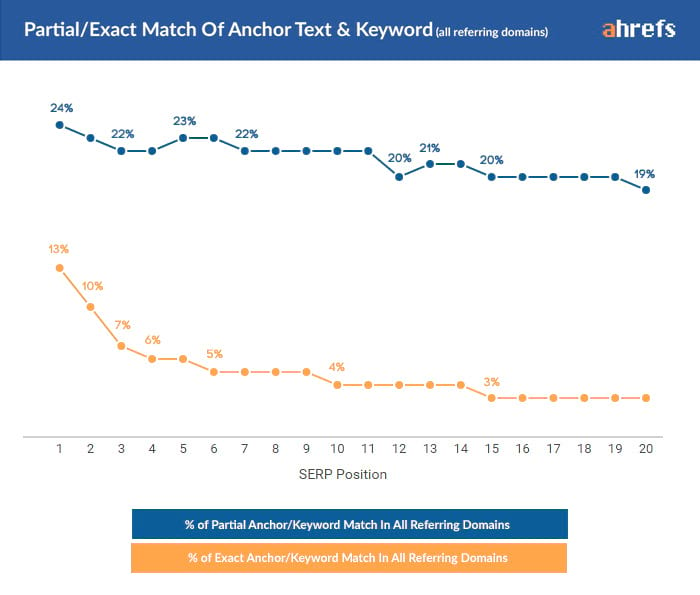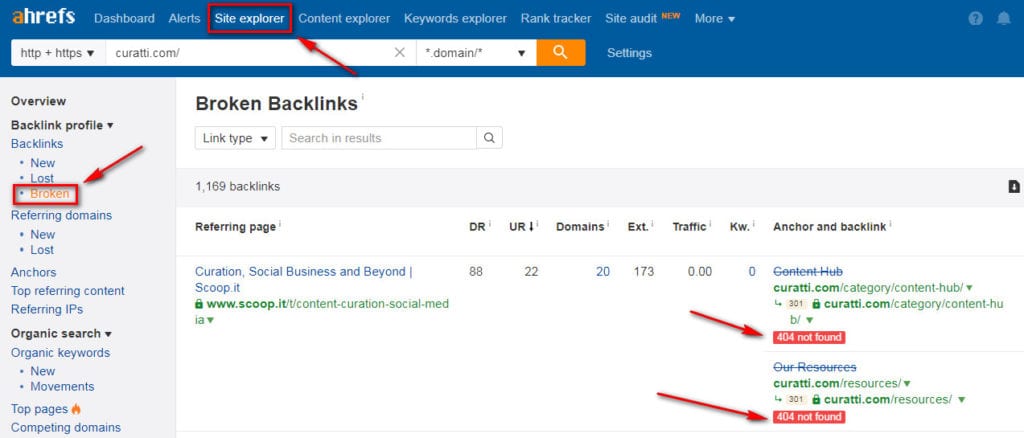Your Authoritative Link Building Guide (Courtesy of Ahrefs)

As you have already understood, we are going to talk about links. The formula is simple: everybody who wants to rank high in Google has to build links. Why? Because Google, as well as other popular search engines, view them as one of the prime indices to rank web pages.
You have probably studied tons of information on the topic and tested multiple link building tactics. Or maybe you are new to the subject and searching for a good starting point.
This guide is good for both categories of link builders. It will serve a checklist for seasoned bloggers/site owners/marketers and a real kickstart for greenhorns.
Why should you take your time to read this guide instead of other material available on the net? Because it includes only working white hat strategies. So, if you follow the tips below, you will boost your website’s ranking while playing on the safe side of SEO.
Sounds good, doesn’t it? Ok, let’s begin.
Does Anybody Need a Definition of Link Building Here?
Well, I’m pretty sure that all of you know that link building is a process of acquiring backlinks to a website with those inbound links coming from external sites.
Every link building campaign is targeted at increasing search traffic from Google.
The graph below illustrates the correlation between link popularity and Google rankings. It’s rather high as you can see.

Source: Study of over 2 million keywords (https://ahrefs.com/blog/on-page-seo/)
What Kind of Links do you Need to Improve Your Site’s Ranking?
To put it simply, a link to your website can be considered a vote. So, the more votes your site will be able to accumulate, the higher chances are that searchers will see it in Google results after they input their query.
However, not all links are equal. That is, not all of them have the same “weight” and affect your site rankings identically.
What is Linking Page Authority?
A website becomes more authoritative as it stockpiles the links. Hence, a link from a high authority site will be more powerful than the one from a low authority site.
Here’s how we, at Ahrefs define linking page/site authority. We have 2 helpful metrics for the purpose:
Domain Rating or DR, which shows the overall strength, in other words, the authority of a site. It is measured from 0 to 100.
URL Rating or UR shows the strength/authority of an individual page. It is also measured from 0 to 100.
Please take a look at the example below, of Ahrefs’ backlink check. The DR score of the given blog is 86 and the UR score is 85.

According to the Ahrefs report, there are over 21,000 domains linking to this page.
Can Nofollow Links Do You Any Good?
You surely noticed that some links have rel=”nofollow” attribute, like this one:
<a rel=”nofollow” href=”http://www.example.com/”>I’m a nofollow link</a>
Google’s guidelines stipulate that any paid links should also have rel=”nofollow” attribute. This attribute gives search engines instructions not to follow the link. Normally, the links with rel=”nofollow” attribute should not contribute to the web page rankings. However, there are different opinions as to this point.
Everybody knows that links from Wikipedia are nofollow. But many leading SEOs consider them beneficial for rankings because the website has a high level of trust.
So, do nofollow links contribute to rankings? ‘Dofollow’ links are surely preferred, but a nofollow link of high quality may contribute to rankings. And that means that you shouldn’t miss your chance to acquire them. You need to remember that if your website’s backlink profile includes both ‘nofollow’ and ‘dofollow’ links, it looks more natural.
Link placement influences their weight as well. For instance, a link from a sidebar or footer may pass less authority than a text link within the content. Why might this happen? Because the link in your content is more likely to be editorial, actually clicked, and surrounded by relevant text.
Google’s ‘Reasonable Surfer’ patent (http://www.seobythesea.com/2010/05/googles-reasonable-surfer-how-the-value-of-a-link-may-differ-based-upon-link-and-document-features-and-user-data/) suggests that Google will try to figure out how likely a link is to be ‘clicked’ and take this into account deciding on its weight.
This means Google will continue to give weight to links from footers, sidebars, and so on, provided that the linking site is an authority.
Anchor Text as a Ranking Factor
Search engines have used and continue to use anchor text as a ranking factor.
In other words, a web page with a target keyword of “leather bags” is likely to benefit from a percentage of its inbound links that contain the phrase. It may be partial or exact match form:
Exact match: leather bags
Partial match: this page about leather bags
A study across 16,000 keywords (https://ahrefs.com/blog/anchor-text/) conducted by Ahrefs, has confirmed that there is a strong correlation between rankings and keyword anchors:
 What do we see in the chart above? The pages at position 1 had an average of 13% exact match links and 24% partial match links.
What do we see in the chart above? The pages at position 1 had an average of 13% exact match links and 24% partial match links.
The takeaway is that a keyword containing anchor text positively affects the rankings. Nevertheless, the overuse of keyword rich anchors can have quite the opposite effect.
When there are too many anchor text links, this can be seen as a sign of manipulation by Google and cause link penalties such as Google Penguin.
Link Weight and Relevancy
You need to know about the number of factors that may influence the ‘relevancy’ of a link and the weight Google assigns to it.
They are:
- The anchor text
- Other outbound links on the page
The text that surrounds a link is also an essential ranking signal. Google holds a “Ranking based on reference contexts” patent (http://www.seobythesea.com/2013/11/google-context-of-links-identify-link-spam/), which could be taken as an outline for reducing context from surrounding text.
How Unnatural Links Affect Your Website Ranking
If Google flags some links as unnatural, most likely they will be discounted and won’t contribute to your rankings. Numerous unnatural links may lead to serious problems in the form of a penalty and rankings/traffic decrease.
It’s my strong belief that if a site decided to link to you, it was an editorial choice, and such link can be considered white hat and Google safe.
It doesn’t matter whether the linking website found your content by themselves (organically) or you had helped them a bit through outreach or promotion.
The links you build manually to draw traffic with the help of guest blogging, content repurposing, content syndication, and so on, are also safe if you use them as part of a wider link strategy and if they are not abusive.
Link Building Tactics
Well, I guess it’s high time to talk about link building strategies that are going to bring you traffic and authority. As I said at the beginning of this blog post, you will find only methods that work here, because I value your time and don’t want you to waste it on reading stuff that can’t be applied in real life.
So let’s start with the most popular and efficient tactic.
1. Creating Link Bait
This is a broad strategy implying the creation of ‘link bait content’. Link bait can take various forms. They include some of the tactics featured below.
To put it simply, link bait is awesome content that attracts links naturally because of its high value or one-of-a-kind proposition. You earn links rather than build them and don’t forget about promotion. Even the best content requires it.
What can be called valuable content?
- Your in-depth research on an important topic
- Some unique data you are eager to share
- A cool survey
- Some appealing and unique graphics
- It also may be a free tool
It’s safe to say that linkbait is a pure white hat link building tactic. This is a kind of come back to the way Google initially imagined links – voting the finest content to the top.
What do you need to implement this tactic? Of course, the ‘bait’ is requisite. In other words, you must have an engaging piece of content people will be eager to share. Your content should be worthy of high search rankings.
If you are creating side projects or free tools, they will also fall under the linkbait category.
Your side projects should be related to, yet separate from your main product or service. They should be able to provide value on their own.
2. Use Natural Influencers’ Ego
Don’t be shy about contacting niche influencers – even if you are just starting up. They are marketers. And even if they are famous already, It’s a rare celeb who will refuse an extra mention.
Here are some of the ego-bait tactics you may use:
- Post an interview with an influencer on your site
- Write an expert roundup including influencers in it
- Quote an influencer in your article or link to their site
- Make up a top 10 list and include an influencer there
I bet that most of the influencers will at least share that kind of content, as it contributes to creating their positive image. This will expand your content reach and potentially lead to links.
3. Use Broken Links for your Link Building Purposes
As time goes by, some once useful resources are removed from the web. This may happen because the company behind the website goes out of business or the site is not maintained anymore.
Dear link builders, don’t miss this opportunity. What you need to do is create and post similar content on your resource, then reach out to those sites with broken links and offer it instead. You’ll see that your efforts will be a success. Most of the webmasters are ready to fix errors on their sites.
4. Fix Broken Links That Point to Your Site
You’d better fix the broken links pointing to 404 pages on your site in order not to lose precious link juice.
I will show how we do it at Ahrefs. You’ll need a free WordPress Redirection plugin (https://wordpress.org/plugins/redirection/).
First of all, we run the Broken Link Checker (ahrefs.com/broken-link-checker) report in Ahrefs Site Explorer. We need this to get a list of all broken backlinks:
 When we have the list, we create a 301 redirect for each broken link with the help of the “Redirection” plugin. That’s it.
When we have the list, we create a 301 redirect for each broken link with the help of the “Redirection” plugin. That’s it.
5. Find Unlinked Brand Mentions
As a rule, when someone mentions your brand on their site, they already know your business and engage with it. However, in some cases, the writer doesn’t include a link back to your site. What you need to do is reach out to that site, say “thank you” for the mention and ask to add a link.
6. Put an end to the Uncredited Copyrighted Material Use
If you find out that someone uses your copyrighted material, like photos or videos, on their site, you have two ways to proceed – Ask them to either remove it or accredit it. Look at the situation as one more link building opportunity. Send an email notifying them of the violation and claiming for accreditation. This should be enough to pick up a link.
Don’t know how to search for sites using your copyrighted images? Try Google’s reverse image search (https://images.google.com/).
7. Try To Get Into The News
Marketing pros call this tactics newsjacking. The main idea is to get into the stream of hot trending news and mention your brand or put forward your ideas on the subject.
The method may turn out to be very effective for picking up high-quality links from popular publications.
But speed is everything in this technique. When something newsworthy happens, writers strive to highlight all the unique angles and collect quotes from experts who may add some insights. But you know that today’s trend is tomorrow’s old news. So act fast!
8. Do Guest Posting
Guest blogging is an effective way to demonstrate your website (brand) to new audiences and build links boosting authority.
Please note that low-quality guest blogging makes no sense as it is no longer effective. Google just squashed it. But high-quality guest blogging remains a win-win method of acquiring white hat links.
Eventually, there is at least 1 top-notch blog that is open to guest post contributors in every niche.
9. Post Interviews With Industry Influencers
Building links through interviews has something in common with PR.
Interviews can take different forms:
- Blog interview
- Participate in ’expert roundup’ posts
- Record a podcast
- Some Tweet Chats still hold weight
- Webinars also stir people’s interest
In any case, all interview formats are aimed at boosting authority in your niche and picking up quality links.
10. Create Infographics
This tactic is not new. It has survived its ups and downs, but now infographics are popular again.
The reason for their comeback is in graphics efficiency for maximizing the return for your outreach efforts.
It’s natural that your outreach is more effective when you offer some value proposition for the host site. When you are ready to provide a high-quality infographic with a customized introduction, this is an example of such a value exchange. You give cool content to the host site and it returns the favor with a backlink.
11. Syndication of Content
I don’t advise you to syndicate content everywhere. However, when you syndicate your content to quality sites with link attribution, this can lead to the traffic increase and rankings boost.
Here are a few examples of quality sites to syndicate your content to:
- Medium
- Linkedin Pulse
- Business 2 Community
- Examiner
Be sure to include a custom title and introduction for each platform to squeeze the maximum out of your syndication.
PICK UP PROOFREADING HERE
12. Repurpose your Content
Why would you want to repurpose your content? Because it can help you to get more value out of your content, plus gain high-quality links.
Some of the things you can do to repurpose a blog post:
- A video
- An infographic
- An eBook
- A SlideShare presentation
You can share every piece of your repurposed content on relevant channels. Many of them offer the opportunity for a backlink.
Just as is the case with other link building strategies, this one should not be abused! It goes without saying that any repurposed content should be of high quality and capable of standing alone.
13. Build Links with Images
Here are some of the ways for you to make custom images bring you backlinks:
- You can visualize some data with a chart
- Create memes that mean something within your niche
- Supply images with quotes from bloggers or celebs respected in your niche
- It is recommended to create pinnable images for your blog posts
- You can also provide stock images for use. But always give attribution for these.
It is particularly effective to add ‘swipeable’ images to your blog posts as well as charts and graphs. Encourage your readers to download and share these images on their own sites to boost the efficiency of this technique and pick up links.
14. Submit your Content to Directories
I don’t advise you to do mass directory submissions. However, there may be some SEO value in acquiring links from quality, niche specific directories.
Take a look at each directory’s PageRank metric. It is commonly used to determine the strength of a directory. Beware though! This metric is not frequently updated and is open to manipulations.
Consider the following points to determine the quality of a directory:
- Make sure that all links added to the directory go through a human review before they go live.
- Check the quality of sites included in the directory. And don’t forget about the manipulated anchor text links coming from the directory pages.
- The age of the directory is also important. You may use org to make sure it existed for some time in its current form.
- Also, check out the directory’s backlink profile. It should have a relatively clean link profile, and not to build spammy links.
- Check whether the page your link would be placed to is cached by Google. You can use this command cache:thedirectory.com/theurl
NB: Directory submissions should only be a small part of your overall link building strategy. Or you may not use the technique at all.
15. Distribute Press Releases
Just as in the case with directory submissions, I don’t recommend mass press release distributions, as such a tactic won’t bring you benefit. And it may also be seen as a sign of manipulative link building.
Every rule, though, has an exception. If your press release distribution is aimed at attracting genuine press, this is a legitimate PR tactic. And that, in turn, means that it is a legitimate link building tactic either.
So, if you have something truly newsworthy like a site launch, for example, select one channel to distribute your press release. Make sure that it is of high quality and written in the third party.
This will increase the chances of your information being noticed and lead to more links.
For press releases, branded links are recommended. They are not the right places for building your anchor text links.
16. Citations on Local Business Directories and Portals
Build citations on local business directories and portals, as it is still an effective tactic for improving local SEO.
Business directories have high acceptance standards and list only legitimate businesses. Therefore, they are trusted by Google.
Just know before you embark on this tactic that not every business directory will include a link back to your site. Don’t worry. Many SEO experts believe that even a mention from a trusted resource may be counted as an ‘inferred link’ by Google and affect the rankings.
17. Comment on Blogs
Leaving comments on blogs is one of the easiest ways to get backlinks to your site. Even more, if you do everything right, the strategy keeps your backlink graph constant or growing with time.
Google likes users who actively participate in a niche and comment on blogs. That makes this is a smart way to show that you are an engaged community member.
But it goes beyond gaining backlinks. Commenting is also a great way to build relationships with other bloggers. This will help you with your future outreach efforts as it is way easier to reach out to somebody you already know.
Mass commenting will not work here. Only genuine, insightful comments on selected blogs may help with rankings.
You quality comments, which contribute to the article content and show your expertise in the field, can drive traffic to your site and help to grow your audience. You may think of it as an indirect ranking factor.
18. Participate in Conversations on Niche Forums
A wise SEO always knows where their audience is – and follows it. Most business niches have at least one forum where your potential customers hang out.
When you are an active participant in a forum, you can drop an occasional link back to your site, where it adds value or answers a question.
Such links are good both for traffic and conversions. Participate in a forum and show your expertise. This will help to build trust within the community.
19. Participate in Niche Community Sites Such as Reddit
This will not be news to many of you: there is a subreddit for everything or almost everything, from marketing to cooking.
What you need to do is identify subreddits related to your niche, then participate, and occasionally share interesting and relevant content from your own site. This is a legitimate way to build traffic, thus driving links.
When such submissions reach a certain number of upvotes, which varies from subreddit to subreddit, they become dofollow and even more valuable for SEO.
You can also get some additional editorial links if your Reddit submission is popular, because many curation sites use Reddit as the source of content.
Reddit is not the only one industry-specific community site. For example, inbound.org is also good for marketers. Active participation there will give you opportunities for building both links and relationships.
20. Answer Questions on Q&A Sites
Links from question and answer style sites like Quora and Yahoo Answers are surely a good way to drive traffic to your site and build your authority in a niche.
You can also use them to identify which topics are currently trending in a niche.
You may notice that people ask a particular question with some frequency. This happens because they can’t find the answer in Google. Create content on your own site and fill that information gap. This is your opportunity for both bringing in search traffic and link building.
21. Become a Sponsor
Charity organizations usually list their sponsors and often link back to their sites. Charities are intrinsically trusted and often have high domain authority. That’s why these links may be beneficial for rankings.
Strictly speaking, these are paid links. But they fall on the lower risk side of the link buying scale.
What else can you do for charity organizations? Offer them your services in exchange for a write up on their site. For example, take photos highlighting some of their events for free. They will post some of your images on their site with link attribution.
Over To You
I hope this article has thrown some light on link building. Now I would love to hear your thoughts on the topic. Which tactics work for your business at the moment? Are you going to try any of the tactics above? Maybe you have any questions/additions to the guide… Don’t be shy to throw them my way 🙂
Cheers & good luck with your own link building campaigns!
You may also want to read: Event Marketing for Local SEO: Effective and Natural Link Building Tactics
Find Link Building Opportunities From Your Competition
6 Steps To Cleverly Get Natural Backlinks For Your Website
 Helga Moreno is a passionate content creator and marketer at Ahrefs bold enough to believe that if there’s a book that she wants to read, but it hasn’t been written yet, then she must write it herself. You can connect with her on LinkedIn here, or tweet her @helgammoreno
Helga Moreno is a passionate content creator and marketer at Ahrefs bold enough to believe that if there’s a book that she wants to read, but it hasn’t been written yet, then she must write it herself. You can connect with her on LinkedIn here, or tweet her @helgammoreno
Featured image: Copyright: ‘https://www.123rf.com/profile_fuzzbones‘ / 123RF Stock Photo

